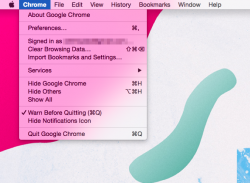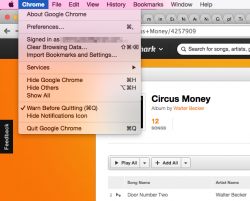For context, here is an menu directly on top of my desktop image. This appearance makes sense – you see the desktop blurred.

Now here is a menu on top of an application. Although the pink is lighter, the overall effect is that you see "through" the application window to the blurred desktop. A little odd, but fine if that's how it works.

But this third case threw me off. The saturated part of the page is so overpowering in the blur that it appears you don't see "through" the application window anymore. Meanwhile the upper part of the menu still "sees" the desktop.

It seems like the content of the blur has more to do with colour saturation than the "layering" that has been established by the concept of application windows that sit on top of each other in a certain order. Thoughts? Was this even worth bringing up?

Now here is a menu on top of an application. Although the pink is lighter, the overall effect is that you see "through" the application window to the blurred desktop. A little odd, but fine if that's how it works.

But this third case threw me off. The saturated part of the page is so overpowering in the blur that it appears you don't see "through" the application window anymore. Meanwhile the upper part of the menu still "sees" the desktop.

It seems like the content of the blur has more to do with colour saturation than the "layering" that has been established by the concept of application windows that sit on top of each other in a certain order. Thoughts? Was this even worth bringing up?

